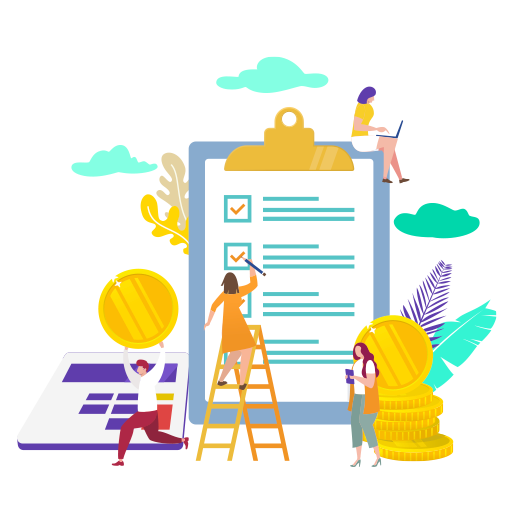
- Home
- Global Payroll
- HCM And Payroll – Before And After Covid
HCM And Payroll – Before And After Covid
Published :

Productivity is the biggest indicator of a healthy organizational culture and HR practices, and the definition and indicators of productivity have changed over time. However, the recent outbreak of COvid-19 has had a drastic impact on organizational processes and how departments like HR and Payroll function. The procedures followed by HR and Payroll Post Pandemic focus on computing productivity rather than putting the time spent on doing the job on a higher pedestal. Moreover, most of the Post Pandemic HR activities now run on autopilot, with the help of HCM and payroll software.
One can compare how the onset of this Pandemic and the subsequent lockdowns have led to innovation in the HR and Payroll procedures. HRIS and Payroll Intelligence have changed the dynamics of monitoring productivity. The conventional HR and Payroll practices are becoming obsolete, bit by bit. This calls for innovation in the Global Payroll practices. Automation is overtaking the majority of the department's responsibilities which were handled manually before the onset of the pandemic. A more intuitive approach to HR practices is required, as unforeseen circumstances render more conventional practices obsolete. This is where payroll software and digital payslip systems come into play.
Let us discuss how changed variables and conditions have forced Innovation into HR and Global Payroll practices.
|
Variables |
Pre Pandemic |
Post Pandemic |
|
Remote Working |
Before the onset of the Pandemic, business travels used to be frequent for HR professionals. This would cost organizations a lot of money. |
With the onset of the Pandemic and the following lockdowns, a sharp increase in remote working was observed, which jumped from 30% to 48%. Online meetings, remotely controlled machines, and AI have allowed workers to carry out their tasks from the comfort and safety of their homes. |
|
Indicators of performance |
Before the onset of the Pandemic, the HR and Payroll departments would depend upon the time spent in the office as a major identifier of the performance of employees. |
The indicators of performance have changed as HR and Payroll professionals utilize automated tools to measure the performance of employees. It is done based on computer usage, emails being sent, and the updating of task records. |
|
Increase in the number of Contingent Workers |
Before Covid-19 made it unsafe for many people to work closely, full-time employees were valued more than anything. |
The Pandemic rendered many companies unable to support all of their employees, which led to massive layoffs. With massive layoffs, the demand for freelancers and contingent workers grew. |
|
Organizational structures and flexibility |
Before the Pandemic disrupted supply chains, emphasis was laid on enhancing the efficiency of workflow, which made them less flexible towards unforeseen disruptions. |
The onset of the Pandemic led to the development of more resilient methods. The construction of workflows that can resist major disruptions has been focused upon worldwide. |
The onset of Covid-19 has proved to be the most violent disruptor of processes in the most recent decades and one of the most significant drivers of change within centuries. In the face of adversity, different industries and their subsequent domains, like the HR and Payroll departments, had to modify their workflows to keep their organizations from going obsolete for more than a year. If organizations had gone obsolete for such a long time, most of them would have gone bankrupt.
As businesses increasingly expand their footprint across geographies, managing workforce compensation in a post-pandemic world has become significantly more complex. The rise of distributed teams, digital nomads, and contingent workers has created an urgent need for global payroll services that can standardize, streamline, and automate compensation processes across jurisdictions.
Modern multi country payroll software solutions have emerged as critical tools for HR and Payroll departments navigating varied regulatory landscapes. These systems enable organizations to manage payroll compliance, local tax laws, statutory reporting, and currency conversions, all from a unified dashboard. As enterprises deal with the realities of global employment, the ability to automate and customize pay cycles by region ensures both legal compliance and employee satisfaction.
Moreover, the shift toward outsourced payroll providers is accelerating. These partners offer specialized expertise in local payroll legislation, helping organizations avoid costly errors and regulatory penalties. By offloading complex administrative tasks to outsourced providers, HR teams can focus more on strategic functions like talent engagement, upskilling, and digital transformation.
The integration of global payroll services with HCM systems also enhances data visibility and governance. Real-time analytics on compensation trends, cost centers, and workforce distribution empower leaders to make informed decisions across borders. In this way, multi country payroll software and outsourced payroll providers are not just operational enablers, they are strategic allies in building resilient, future-ready HR ecosystems.
In the evolving world of remote and global work, robust global payroll services are no longer optional, they are essential to operational continuity, compliance, and competitive advantage.
The global payroll practices have changed substantially as online payments came into trend. What was the sole responsibility of the entire Payroll department is now left at the hands of the employees? The Work from Home model allows employees and employers to manage their time logs. Once approved by their managers, these time logs are considered by the HR and Payroll departments to finalize employee payments. Payroll Intelligence and HRIS play a major role in the monitoring of employees, as well as the computation of their payouts. Once approved by the HR and Payroll department, payments automatically get disbursed to the employees. Thus, the practices related to Payroll Post Pandemic have also evolved for the better, thanks to payroll software and HCM systems.
Some HR and Payroll practices have also gone obsolete, such as the pre-pandemic payroll management systems. Some of these practices involved the utilization of Excel sheets and software that needed to be accessed on the premises. Cloud Payroll software has replaced these obsolete resources, as they provide more accessibility and security than the previous ones. Several technologies like HRMS, endowed with payroll features, were popularized and were adopted, which allowed the HR and Payroll departments to keep an accurate record of employees and their payroll information. Thus, HR and Payroll practices have become more agile, owing to the Automation that has been introduced in the process as a response to the limitations posed by the Pandemic.
Therefore, it can be concluded that the onset of Covid-19 has influenced HR and Payroll practices in a major way. However, does that imply that the unconventional methods adopted in the wake of the Pandemic are all beneficial and they should be set in stone? Are all the changes made to accomodate remote working beneficial for both the employer and the employees? These are questions that HCM and payroll software solutions continue to address.
Enterprise asset management (EAM) involves the management of mission critical assets of an organization throughout each asset's lifecycle. EAM is used to plan, optimize, execute, and track the needed maintenance activities with the associated priorities, skills, materials, tools, and information. The aim is to optimize the quality and utilization of assets throughout their lifecycle, increase productive uptime and reduce operational costs.
Enterprise asset management (EAM) involves the management of the maintenance of physical assets of an organization throughout each asset's lifecycle. EAM is used to plan, optimize, execute, and track the needed maintenance activities with the associated priorities, skills, materials, tools, and information.
The software helps in effective maintenance of assets through preventive, predictive, shutdown and breakdown maintenance strategies. The system also helps enterprises mitigate equipment risks by enhanced safety standards. The streamlined operations and improved asset performance helps organizations increase their investment effectiveness.
EAM is important because it helps organizations track, assess, manage and optimize asset quality and reliability. Asset intensive Organizations have hundreds, thousands, even millions of assets which needs to be maintained to maximize / optimize life of these assets to increase the return on investment.
The key features of effective EAM are:
Asset Intensive companies under the following Industries :
Contact us for a meeting and schedule a demo
This differs on case to case basis, based on the type of installation and unique industry specific requirements. Contact us for a meeting and schedule a demo.
This differs on case to case basis, based on the type of installation and unique industry specific requirements. Contact us for a meeting and schedule a demo.
Stay Connected, follow us on LinkedIn / Twitter to know more about EAM Software latest trends.

All Rights Reserved. © Copyright 2024. Ramco Systems.